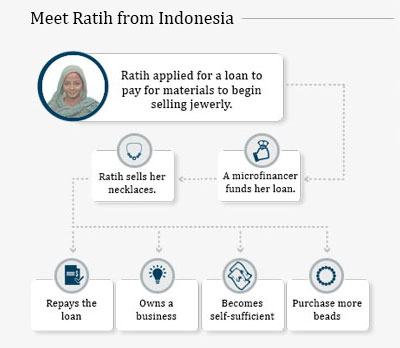Microloans are short term loans that offer borrowers a lower cost alternative to payday loans. Advancements in the online lending industry have placed more emphasis on increasing the borrower's potential for prosperity rather than draining their finances and leaving them with inescapable debt. Specifically, microlenders are spearheading a grassroots effort to offer borrowers not only small cash loans but also free programs that will help borrowers succeed by improving their financial literacy. These efforts are more than traditional lending platforms like banks are willing to undertake. However, after analyzing years of microloan data it's now possible to show to conventional credit lenders that packaging loans with free credit education courses can create more sophisticated borrowers that can over time become good customers.

Commonly used as an alternative to payday financing, short term online lending allows borrowers the same fast access to small amounts of cash but with fairer rates and terms.
A startling U.S. statistic uncovers that more than 40% of payday loan borrowers make less than $20,000 per year. According to the U.S. 2016 poverty level guideline, a family of 3 with an income of $20,126 is at the threshold. This means that 40% of payday loan borrowers are eligible for supplemental governmental benefits and are living a daily struggle to provide for themselves and their families. These extremely low income individuals often become stuck in an expensive revolving door of payday loans without knowing how to exit and avoid the fee cycle.
It is always better not to have to borrow money, but sometimes it is necessary. If one does need to borrow, seeking out short-term, online financing, with fixed rates and no hidden fees, whether it's called a "microloan", a "short term loan," or a "payday loan alternative," can help borrowers access funds (and also learn how the financial world works while, hopefully, developing responsible financial habits).